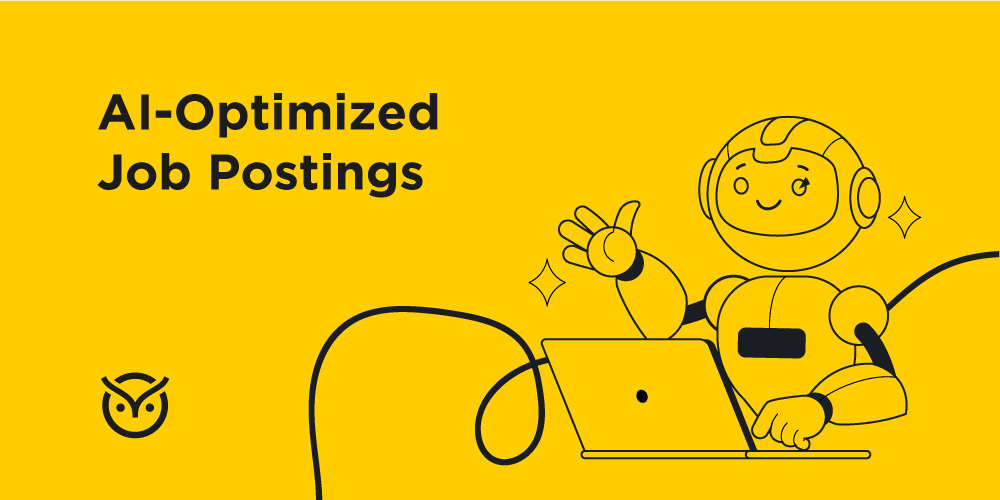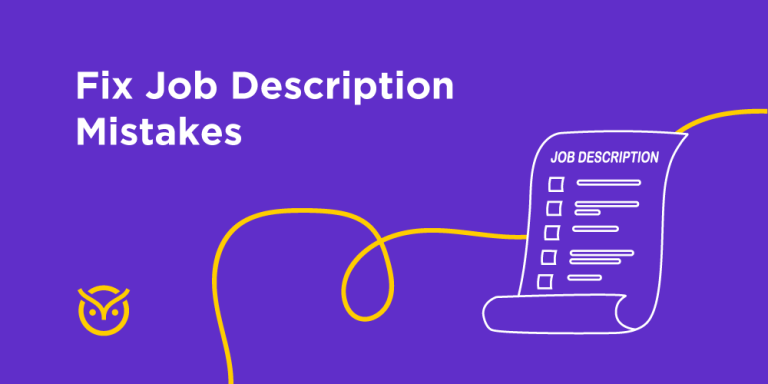Optimizing Job Descriptions for Specific Job Boards Using AI
Finding great talent is harder than ever. The average corporate job posting gets lost in a sea of over 250 applications. That’s why your job description needs to be more than just a list of duties. It needs to be a compelling advertisement that helps you stand out and attract the people you need.
Remember when you could just throw up a list of duties and skills and call it a job description? Those days are over. Now, a generic job post just gets lost in the online abyss, meaning you’ll miss out on amazing candidates and struggle to fill those key positions.
The statistics are telling: a recent study by Glassdoor revealed that 76% of job seekers prioritize detailed and engaging job descriptions when evaluating potential employers. Moreover, LinkedIn’s 2023 Workplace Learning Report found that 94% of employees would stay longer at a company if it invested in their career development, often communicated through compelling job descriptions.
But creating standout job descriptions can feel overwhelming for already overburdened hiring managers. That’s where Artificial Intelligence (AI) steps in. By combining data-driven insights with human expertise, AI enables the creation of tailored, engaging, and effective job descriptions for each job board’s unique audience and algorithm.
“AI is not just about automating tasks; it’s about augmenting human intelligence to make better decisions,” says Sarah Porter, Head of Talent Acquisition at Tech Solutions Inc. “By understanding the nuances of each platform and the preferences of today’s job seekers, AI can craft job descriptions that truly resonate and cut through the noise.”
Before diving into the “how” of AI-powered optimization, let’s explore the “where.” Different job boards demand different approaches, and knowing their unique characteristics is key.
Navigating the Job Board Galaxy: A Recruiter’s Guide
Indeed: The Search Engine Giant
Target Audience
Indeed serves a broad spectrum of job seekers, from entry-level workers to executives, across numerous industries. Its audience includes those actively hunting for opportunities, casual browsers, and even passively employed professionals open to change.
Search Algorithm
Indeed’s algorithm prioritizes relevance, keywords, recency, and job seeker behavior (e.g., search history). Success here requires keyword-rich, structured job descriptions that stand out in a crowded marketplace.
Best Practices
- Clarity and Conciseness: Write clear, jargon-free job descriptions that are easy to read. Include bullet points for quick scanning.
- Keyword Optimization: Incorporate relevant keywords into the title, responsibilities, and qualifications. Use variations to cover broader searches.
- Skills and Qualifications: Clearly state the essential requirements for the role to attract qualified candidates.
- Call to Action: Encourage applications with a strong and simple call to action.
Common Mistakes
- Keyword Stuffing: Overusing keywords can result in penalties or removal from the platform.
- Generic Language: Avoid vague phrases and focus on specific, compelling details about the role.
- Neglecting Updates: Freshness matters—update job postings regularly to maintain visibility.
LinkedIn: The Professional Powerhouse
Target Audience
LinkedIn attracts professionals seeking career advancement, networking opportunities, and insights into industry trends. Many users are passive candidates open to roles aligning with their career goals.
Search Algorithm
LinkedIn’s algorithm factors in skills, experience, and connections, as well as job seekers’ engagement with company profiles. Optimizing for LinkedIn means emphasizing professional aspirations and showcasing your employer brand.
Best Practices
- Professional Tone: Use engaging yet professional language tailored to a career-focused audience.
- Career Development: Highlight growth opportunities and career paths. Emphasize mentorship, training, and learning initiatives.
- Showcase Culture: Introduce your company’s culture and values to appeal to candidates seeking a workplace that aligns with their aspirations.
- Personalized Messaging: Customize descriptions to match the ideal candidate’s skills and goals.
Common Mistakes
- Casual Language: LinkedIn’s audience expects professionalism, so avoid overly informal language.
- Neglecting Branding: Failure to highlight your company’s mission and values can make job descriptions less appealing.
- Generic Descriptions: Tailor job descriptions to resonate with LinkedIn’s user base, focusing on their unique preferences.
Glassdoor: The Transparency Advocate
Target Audience
Glassdoor attracts job seekers who value transparency in company culture, employee feedback, and compensation. Many users actively research employers before applying.
Search Algorithm
Glassdoor ranks postings based on keywords, company reviews, and relevance. It also considers employee sentiment and compensation information.
Best Practices
- Transparency: Address concerns raised in reviews and emphasize your company’s positive attributes.
- Highlight Benefits: Showcase perks like work-life balance, competitive pay, and employee development programs.
- Competitive Compensation: Use AI tools to analyze industry salary trends and ensure your offerings are attractive.
Common Mistakes
- Ignoring Negative Reviews: Failing to address employee feedback can harm credibility.
- Vague Language: Avoid generic descriptions that fail to inspire confidence.
- Overlooking Benefits: Candidates prioritize benefits—make them visible.
Monster: The Job Board Veteran
Target Audience
Monster’s users span industries and experience levels. This includes job seekers actively searching for roles or exploring career changes.
Search Algorithm
Monster’s algorithm prioritizes keywords, location, and freshness. To stand out, your job description should be concise, impactful, and mobile-friendly.
Best Practices
- Impactful Language: Use strong action verbs and quantified achievements to highlight the role’s value.
- Mobile Optimization: Ensure descriptions are scannable on mobile devices using concise language and bullet points.
- Clear Skills Listing: List essential skills and qualifications prominently.
Common Mistakes
- Overly Lengthy Descriptions: Keep paragraphs short to maintain engagement.
- Poor Mobile Formatting: Ensure readability for candidates searching on smartphones.
- Weak Calls to Action: Motivate candidates with compelling, actionable language.
Unleashing the Power of AI: Tools of the Trade
AI Tools for Job Description Optimization
- Pymetrics: Uses neuroscience-based assessments to match candidates to roles based on potential, not just past experience.
- iMocha: Offers pre-built assessments and coding simulations to ensure candidates meet technical qualifications.
- Mya & Olivia: Chatbots that automate candidate communication, answering FAQs, scheduling interviews, and improving the overall experience.
Key AI Features for Job Descriptions
- Competitor Analysis: Analyze rival job postings to identify trending keywords and phrases.
- Sentiment Analysis: Assess the tone of employee reviews to address concerns and highlight positives.
- A/B Testing: Use AI to test different job description formats for effectiveness, improving engagement and application rates.
The Human Touch: Ethics and AI in Recruitment
While AI is transformative, ethical considerations are vital. AI should enhance human decision-making, not replace it.
- Fairness and Transparency: Ensure algorithms are free from bias and explain how candidate data is used.
- Human Oversight: Recruiters remain crucial for evaluating cultural fit and building relationships.
The Future of Recruitment is Here
AI is revolutionizing the way recruiters craft job descriptions for specific job boards. By tailoring content to each platform’s unique audience and leveraging AI tools for optimization, recruiters can attract top-tier talent while maintaining authenticity.
Are you ready to transform your job descriptions? Start optimizing with AI today and position your company for recruitment success!







